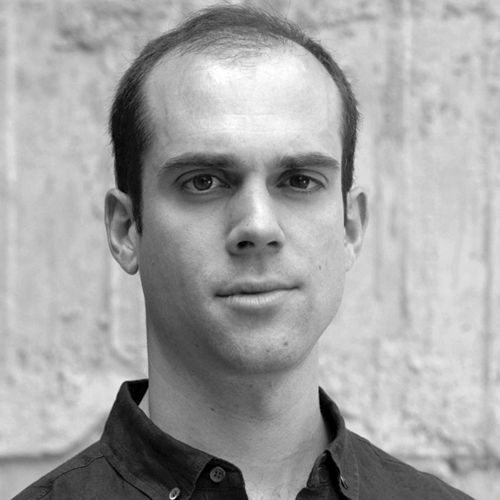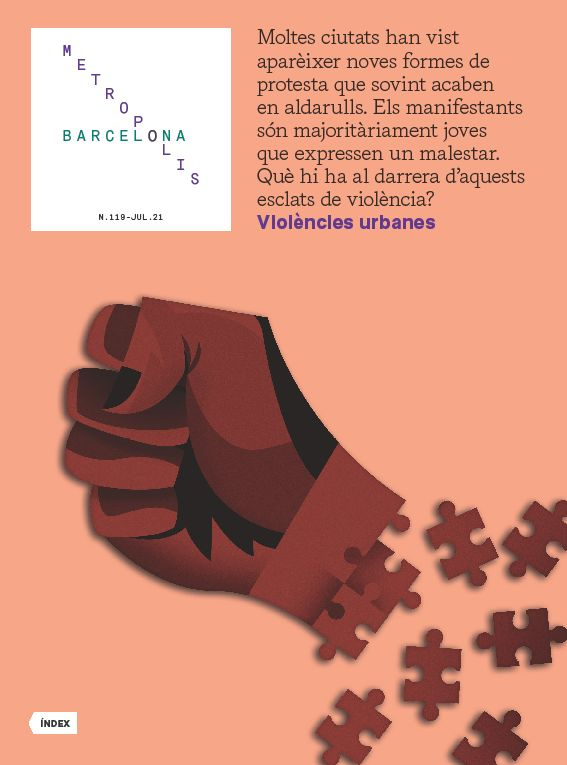
The Cerdà Plan for Barcelona’s Eixample has witnessed multiple interventions since the outset of its execution. This variability, typical of plans or architectures designed with flexible and adaptable systems, are structures that manage to be sustainable over time thanks to their capacity to be updated.
“…Asserting the value of incomplete form is a political act architects should perform in the public realm. This means asserting not only the beauty of unfinished objects but also their practicality.”
“Asserting the value of incomplete built forms is a political act because it confronts the desire for fixity; it asserts (…) that the public realm is a process.”[1]
This concludes the essay The Public Realm by the sociologist and urban planner Richard Sennett. Based on his experience as a member of multidisciplinary teams for urban design projects around the world, he sets forth the virtues of open urban systems, in unstable evolution and in a process of constant change adaptive to the uncertainties and imbalances of society. Sennett proposes an initial dichotomy between two systems: one closed (in harmonious equilibrium) and one open (free from stalled urban planning). Based on this polarisation, he develops a thinking that defends the virtues of the cities that spark an open, permanent debate, and that constantly invite reflection on their future.
An open system
Taking this categorisation of the public realm as a reference, it is clear that Barcelona’s Eixample is an open system, which, as it resolves its conflicts, generates new ones. This organicism has been what has kept the Cerdà Plan alive and kicking for a century and a half since its conception. Every debate, every new municipal proposal, every neighbourhood demonstration or every citizen demand is, despite the ambiguity, a sign of the success of the planning for the Eixample district. Cerdà’s grid has always been subject to a desire to change for one reason only: because it allows it. This capacity to transform and acquire new formal definitions is the most genuine feature of open urban systems that ensure that a city evolves in tune with the needs of its times.
As an analogy, both conceptually and aesthetically speaking, the Eixample represents a kind of chessboard for Barcelona. Understanding it as a theoretical isotropic mesh, its systemic and geometric order unfurls an infinite range of plays in which a single right movement is never set out. The essence of the game is essentially focused on all its combinatorics and the capacity to do and undo according to its rules.
Cerdà’s basic plan, comprising a system of blocks with sides 113.3 m long, streets of 20 m wide, chamfers of 20 m and 45⁰ north orientation, replicating the Roman orientation, plots the master lines of an urban universe in which the relationship between content and continent (empty and full) lies in its versatility and multi-functionality, because it can accommodate even future options that are yet to be invented. In this regard, it is paradigmatic to think that Cerdà devised the road section in the Eixample based on, besides the hygienist component, the forecast of the circulation of trams and not cars, an invention that would take fifty years to crystallise but that unfortunately has ended up being one of the main actors in the Eixample in the last century.
[1] Sennett, R. L’espai públic. Un sistema obert, un procés inacabat [The Public Realm. An Open System, an Incomplete Process]. Arcàdia, Barcelona, 2014. Page 60.
 Llobregat-Besòs perspective view of L'illa de les illes [The Block of Blocks] by the UTE Solà-Morales, Casas and Villagrasa team
Llobregat-Besòs perspective view of L'illa de les illes [The Block of Blocks] by the UTE Solà-Morales, Casas and Villagrasa teamAn absurd system
Road traffic still occupies a disproportionate volume in the heart of Barcelona. Head architect at Barcelona City Council, Xavier Matilla, points this out with figures that show that every day a greater number of cars drive through the Eixample horizontally than those driving along the upper Ronda de Dalt ring road and the seaside Ronda Litoral ring road put together. In the same vein, Josep Bohigas, the current director of the Urban Ecology Agency of Barcelona, considers the Eixample an absurd channel for vehicles of unacceptable levels. Barcelona absorbs more than 600,000 cars every day in the city centre from the outskirts, a figure higher than that recorded by Manhattan, for instance.
These positions have long been beyond the scope of opinion and are quantifiable certainties in the air pollution index (the cause of roughly 7% of natural deaths, i.e. approximately 1,000 per year)[1] and noise levels. As the writer Gabi Martínez tells us, Barcelona is the noisiest western city in the world and seventh in the global ranking behind New Delhi and Cairo, among others.[2] The item left on the game board that should gradually dwindle and disappear is, non-negotiably, the private car. Our preferred living scenarios – the streets – should stop being hostile places where community life plays a secondary role, giving precedence to tarmac and smoke.
[1] Rico, M., Font, L., Arimon, J., Marí, M., Gómez, A. and Realp, E. Report on Barcelona’s air quality [online]. Barcelona Public Health Agency, 2019. Page 5 [viewed on 3 May 2020]. Available at: https://www.aspb.cat/wp-content/uploads/2020/10/Informe_qualitat-aire-20....
[2] Martínez, G. Naturalmente urbano. Supermanzana: la revolución de la nueva ciudad verde [Naturally Urban. Superblocks: The Revolution of the New Green City]. Planeta, Barcelona, 2021. Page 11.
It is possible to encapsulate what is sought into a single verb and that everyone understands with the corresponding semantic scope: to pacify.
A system to roll out
To enhance the effectiveness of this strategy, Barcelona City Council recently announced a competition called Superilla Barcelona: nous eixos verds i noves places [Superblock Barcelona: New Green Hubs and New Squares]. It was structured in two parts: Hubs, which focuses on converting Carrer Consell de Cent into a road with priority for pedestrians and with more vegetation, and New Squares, which aims to transform the intersections of Consell de Cent with the streets Rocafort, Comte Borrell, Enric Granados and Girona into squares with no car intersections. The goal of the competition leaves no room for doubt in its aspirations: urban greenery, environmental improvement, proximity and the right to public space, the water cycle, biodiversity, energy and the value of permanence. These are some of the provisions set out by the competition rules and that define the guidelines for the proposals put forward by the teams of architects and urban planners who participated therein. This declaration of intent leads to encapsulating what is sought into a single verb and that everyone understands with the corresponding semantic scope: to pacify. However, something similar happens in the opposite direction with another word: superblock.
Beyond the many beneficial contributions of the superblock model, there are no doubt still new trade-offs on account of its implementation.
An ambiguous system
The competition itself includes the term superblock in the title, and yet it immediately invites us to define a green hub and squares at intersections. It is clear that at this point no citizen overlooks the fact that superblocks were originally groups of 3 × 3 blocks in the Eixample where traffic was restricted within this district. In fact, one of the first critical voices of the call for entries was that of the previous director of the Urban Ecology Agency of Barcelona, Salvador Rueda. Rueda is the ideologue of the modern superblock and advocate of implementing the plan to build 503 superblocks stretched across Barcelona.
A buzz of controversy has always surrounded the superblock. Based on the previous scepticism generated by the concept, criticism was sparked with the crystallisation of the pilot scheme in Poblenou. The media, political parties, lobbies like the car lobby (apparently coordinated) and some neighbourhood residents have repeatedly spoken out against this superblock with a rather reactionary mindset, although they have also put forward well-founded arguments that affect day-to-day functionality. Beyond the many beneficial contributions of the superblock model, there are no doubt still new trade-offs on account of its implementation. It is therefore rightful to ask: are hubs and squares, despite having a shared purpose, an alternative to make up for the superblock?
In fact, while the superblocks capitalised on all the media attention in Barcelona’s public realm, contrasting voices such as those of urban planning professor Maria Rubert de Ventós already anticipated that “perhaps we need to think less about superblocks and more about super-intersections!”.[1] Understanding that a super-intersection is a square on a corner, she added that “each intersection in the Eixample has a surface area similar to a square in the Gràcia neighbourhood, and could become a space brimming with life”. Rubert de Ventós has provided an insightful and painstaking perspective on the recent decades of the city’s evolution. A member of the Barcelona City Planning Laboratory, he defends the specialist field of city planning almost as a science, far removed from the discussion of current affairs by amateurs and political tendencies. Referring to the superblocks, he pointed out that the idea of “making micro-neighbourhoods of 3 × 3 blocks was a proposal put forward by GATCPAC [Group of Catalan Architects and Technicians for the Progress of Contemporary Architecture] in 1934, when the car was an exotic vehicle. (...) The superblock is an effective pedagogical tool to move the focus away from the car, but an urban planning solution that is not always successful if it encourages segregation and inequality of streets that should have the same conditions, in line with Cerdà’s universalist idea”.[2] He insists on the bottom line of making the city more people-oriented, homogeneous and egalitarian for all. Moreover, he advocates a mixed model far and wide with pacified streets, while allowing access to cars with space and speed restrictions.
 Section of L'illa de les illes [The Block of Blocks] by the UTE Solà-Morales, Casas and Villagrasa team
Section of L'illa de les illes [The Block of Blocks] by the UTE Solà-Morales, Casas and Villagrasa teamA system on trial
Focusing once again on this likely change of script when tackling a new Eixample, Matilla denies the fact that the model of hubs and squares blurs the previous superblock plan. He declares that, all in all, the hubs will end up defining groups of pacified blocks and that the current council’s urban strategies are an evolution of those proposals that were already implemented in previous mandates, such as when, for example, Enric Granados or Portal de l’Àngel became pedestrian streets. This is a model and a criterion that must be defined with the competition’s winning teams based on ideas that are clear in concept and still vague in form. This is also understood by the members of Cierto Estudio (Marta Benedicto, Ivet Gasol, Carlota de Gispert, Anna Llonch, Lucia Millet and Clara Vidal), the winning team of the Hubs competition, in conjunction with B67 Palomeras Arquitectes, who justify that in the timeframe and scope proposed by the tender, their proposal evokes rather a street atmosphere instead of a closed project ready to execute: “the ambiguity and proportions of the Cerdà plan support the future flexibility that we propose, a street able to adjust to the next hundred years like the streets that Cerdà himself defined”, explains Carlota de Gispert.
Bohigas considers that the new proposal for superhubs complements the superblock model and believes that the authorities should not be single-minded in an overly systemic idea.
In line with this conception of a project whose definition is underway, Bohigas emphasises the importance of holding open tenders beyond entrusting the future of Barcelona to its technicians. According to him, the introduction of private architecture firms in defining the future Eixample favours “ironing out pre-established opinions” about what the city’s model should look like. And he insists that the diversity of voices leads to putting together a joint and more multi-faceted programme. He considers that the new proposal for superhubs complements the superblock model and believes that the authorities should not be single-minded in an overly systemic idea. Just like the Poblenou superblock sparked a debate that enhanced a first endeavour with very tentative formal mechanisms and that was consolidated in an improved version in Sant Antoni, the proposed new interventions will serve to highlight shortcomings and mistakes in the competition’s rules. Despite the desire to homogenise the various projects under the hub and square tender, Bohigas maintains that, by the time they are crystallised, they will all have inevitably become unique and will contribute to adding improvements to the projects that succeed them.
 Sea-Mountain Axonometry of L'illa de les illes [The Block of Blocks] by the UTE Solà-Morales, Casas and Villagrasa team
Sea-Mountain Axonometry of L'illa de les illes [The Block of Blocks] by the UTE Solà-Morales, Casas and Villagrasa teamA system of layers
The other leg of the tender, New Squares, brings into play the complexity of joining and separating the square and the intersection at the same time. A space in which to spend time is not the same as an intersection. This is precisely the starting point for the reflection made by the winners of the Consell de Cent intersection with Compte Borrell, Clara Solà-Morales, Albert Casas and Frederic Villagrasa. In accordance with Cierto Estudio’s suggested hubs, they propose a square in which the addition of new trees is the backbone of the resulting new spaces. While Cierto Estudio doubles a row of trees and occupies the current side of the road, freeing up the central axis, Solà-Morales-Casas-Villagrasa generate a centrality by installing new lush vegetation. They conclude that their project is the result of starting with a very simplified basic scheme to which they gradually add layers: “We have done a system exercise and not so much of the place. The squares in Gràcia, for example, do not have hub streets and, therefore, their characteristics are completely different from the intersections. We could not propose a similar project for both contexts”, Solà-Morales explains. Instead of taking a gamble on the peculiarity of a design or the uniqueness of the location, they prefer to opt for a systemic solution that builds a form of thinking that can be formalised in many ways. This basically means that the square must be repeatable and reproducible: “The City Council wanted the projects to be a flower in a garden, but in recent meetings we are addressing a new roadmap that works with a sum of streets and squares as a whole”.
Solà-Morales-Casas-Villagrasa defend a shared system of hubs, which also incorporates the proposals for New Squares. They do not believe that the superblock model can be accomplished if each intersection is unique. Solà-Morales thinks the government’s single management is essential and Casas stresses: “A project must be coordinated jointly and not be a Frankenstein of several projects”. Rubert de Ventós shares a similar opinion, pointing out that one of the great virtues of the Eixample is its monotony, and reinforces this with the idea that Barcelona is not a picturesque city where repetition makes urban sense and is an egalitarian factor.
A natural system
All these urban planning disquisitions could be distilled into another concept already announced by Cerdà in his Teoría general de la urbanización [General Theory of Urbanisation], although it can be confused with the contemporary slogan, “ruralise the city”. In his Cartesian plan, Cerdà specified the planting of trees every 8 metres and intended to create green areas within the blocks’ courtyards or patios. Today, the survival of big cities depends on their ability to introduce green infrastructure into their built environment: “Improving environmental conditions is one of the guarantees of metropolitan quality. The metropolitan territory must be understood as pieces that make up the natural space, and that “urbanised nature” is part of the city, and not only an external outline surrounding it”.[1]
This invasion of green areas in the urban fabric is undoubtedly the major challenge that Barcelona still faces and that must be the structuring element that draws the main lines of an irreversible strategy. Planting trees and removing tarmac should be an unchangeable path that does not correspond to one- or two-term short-range operations. Josep Bohigas compares the current vision of the different governments with previous campaigns promoted by the City Council, such as the well-known Barcelona, posa’t guapa [Barcelona, Get Pretty] campaign. He believes that “we should not agree to such superficial proposals”. Similarly, Gabi Martínez condemns that “Barcelona no longer wants to be so pretty, it prefers health”.[2] Bohigas also points out the need for future interventions not to remain exclusively in the urban U (street section) and for them also to affect a renovation of the housing stock. Albert Casas adds that he considers it essential not to put too much strain on the street surface and to think of roofs as new public spaces.
The success of Barcelona’s future lies in the possibility of shaping, in the coming years, a structural skeleton based on green hubs and corridors that allow articulated sums of other variable elements. Coming back to Sennett’s terminology, the Eixample must uphold its commitment to an open system, ensuring vegetation is of a permanent nature.
[1] Busquets, J. Barcelona, la construcció urbanística d’una capital compacta [Barcelona: The Urban Evolution of a Compact City]. Laboratori d’Urbanisme de Barcelona, 2018. Page 457.
[2] Martínez, Gabi (2021). Naturalmente urbano. Supermanzana: la revolución de la nueva ciudad verde [Naturally Urban. Superblock: The Revolution of the New Green City]. Destino. Page 50.
The newsletter
Subscribe to our newsletter to keep up to date with Barcelona Metròpolis' new developments





